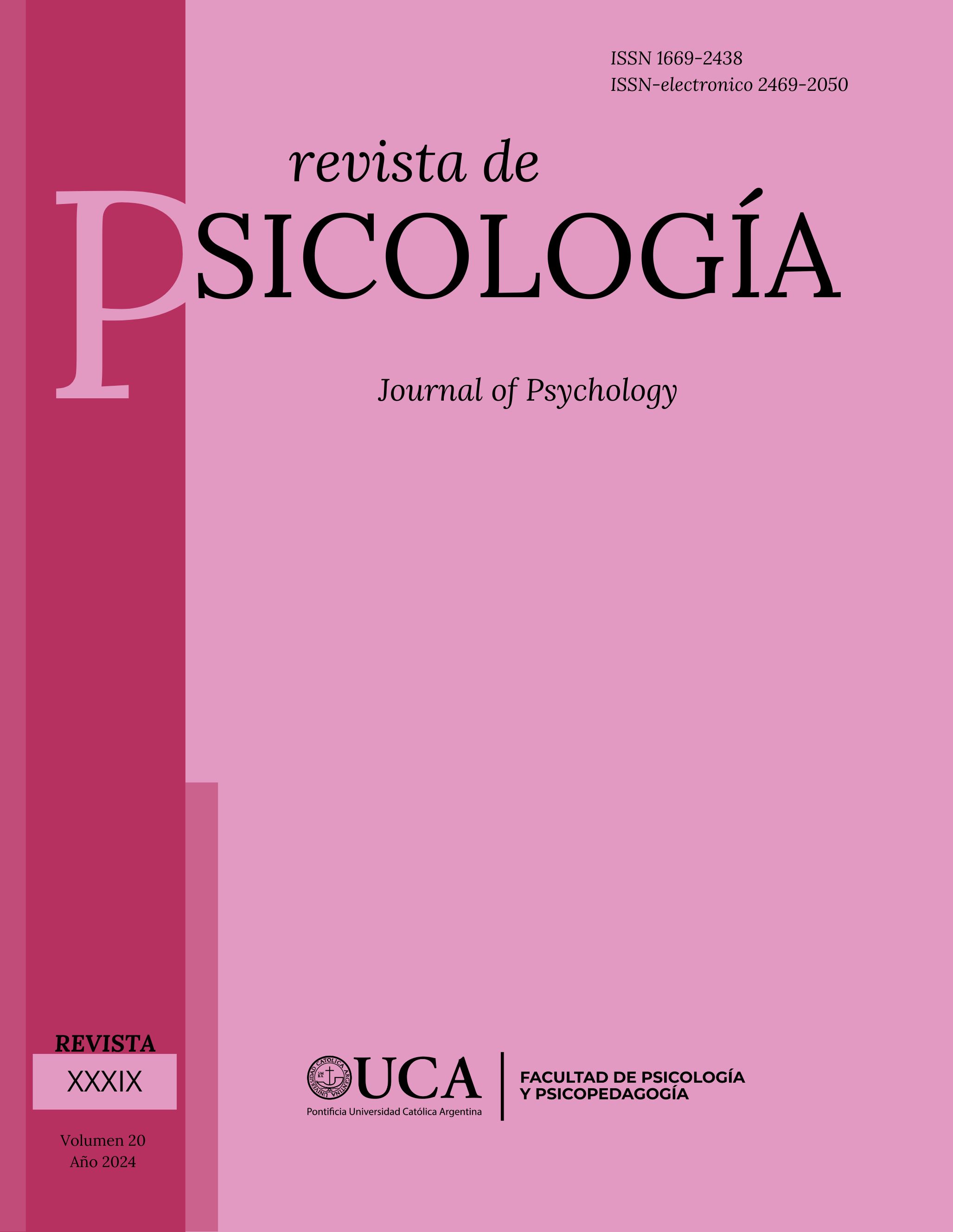Métricas de la Producción Académica sobre Prudencia, Phronesis y Sabiduría Práctica
DOI:
https://doi.org/10.46553/RPSI.20.39.2024.p7-28Palabras clave:
Prudencia, Phronesis, Sabiduría práctica, Bibliometría, CienciometríaResumen
El presente trabajo busca identificar el manejo que se le ha dado en la literatura académica al término prudencia y sus sinónimos phronesis y sabiduría práctica. Se realizó una extracción de información de Scopus y Web of Science, con los tres términos, sin límites de tiempo ni idioma y se llevaron a cabo análisis bibliométricos y cienciométricos mediante el paquete de R Bibliometrix, con un conjunto de 2,910 registros. Se identificaron dos tendencias principales; una filosófica, de gran dispersión, pero buena proyección y otra muy especializada en el campo de la economía, con buen desarrollo, pero baja centralidad. La psicología tiene tímidas apariciones y se constituye en un reto la consolidación de una línea de investigación en psicología de la prudencia.
Descargas
Citas
Amabile, T. M., & Pillemer, J. (2012). Perspectives on the Social Psychology of Creativity. The Journal of Creative Behavior, 46(1), 3–15. https://doi.org/10.1002/JOCB.001
American Psychiatric Association. (2014). Diagnostic and Statistical Manual of Mental Disorders (5a ed.). https://doi.org/10.1176/appi.books.9780890425596
Aria, M. & Cuccurullo, C. (2017). bibliometrix: An R-tool for comprehensive science mapping analysis. Journal of Informetrics, 11(4), 959–975. https://doi.org/10.1016/J.JOI.2017.08.007
Aristóteles. (2001). Ética a Nicómaco (J. L. Calvo Martinez, Trad.). Alianza Editorial. (Traducción de la obra publicada en 1894).
de Aquino, T. (2001). Suma de Teología (4ª ed.). (Regentes de Estudios de las Provincias Dominicanas en España, Trad.) Biblioteca de Autores Cristianos. https://www.dominicos.org/estudio/recurso/suma-teologica/ (Obra original publicada en 1485)
Aubenque, P. (1999). La prudencia en Aristóteles (M. J. Torres Gómez, Trad.). Crítica. (Obra original publicada en 1963).
Babaii, E. & Taase, Y. (2013). Author-assigned keywords in research articles: Where do they come from? Iranian Journal of Applied Linguistics, 16(2), 1–19. https://ijal.khu.ac.ir/article-1-1786-.pdf
Bachmann, C., Habisch, A., & Dierksmeier, C. (2018). Practical Wisdom: Management’s No Longer Forgotten Virtue. Journal of Business Ethics, 153(1), 147–165. https://doi.org/10.1007/S10551-016-3417-Y
Becker, C. K., Ert, E., Trautmann, S. T., & van de Kuilen, G. (2020). Experiencing risk: Higher-order risk attitudes in description- and experience-based decisions. Journal of Experimental Psychology. Learning, Memory, and Cognition, 47(5), 727–746. https://doi.org/10.1037/XLM0000975
Bhattacharya, O., Chatterjee, A., & Basu, J. (2017). Humility: An Emerging Construct in Moral Psychology. Psychological Studies, 62(1), 1–11. https://doi.org/10.1007/S12646-017-0387-9
Bradford, S. C. (1985). Sources of information on specific subjects 1934. Journal of Information Science, 10(4), 176–180. https://doi.org/10.1177/016555158501000407
Callon, M., Courtial, J. P., & Laville, F. (1991). Co-word analysis as a tool for describing the network of interactions between basic and technological research: The case of polymer chemsitry. Scientometrics, 22(1), 155–205. https://doi.org/10.1007/BF02019280
de Caro, M. & Vaccarezza, M. S. (2021). Introduction. En M. De Caro & M. S. Vaccarezza (Eds.), Practical Wisdom. Philosophical and Psychological Perspectives (pp. 1–7). Routledge.
Colasante, A. & Riccetti, L. (2020). Risk aversion, prudence and temperance: It is a matter of gap between moments. Journal of Behavioral and Experimental Finance, 25, 100262. https://doi.org/10.1016/J.JBEF.2019.100262
Donthu, N., Kumar, S., Mukherjee, D., Pandey, N., & Lim, W. M. (2021). How to conduct a bibliometric analysis: An overview and guidelines. Journal of Business Research, 133, 285–296. https://doi.org/10.1016/J.JBUSRES.2021.04.070
Doris, J. M. (2010). Introduction. En J. M. Doris & Moral Psychology Research Group (Eds.), The moral psychology handbook (pp. 1–2). Oxford University Press.
van Eck, N. J. & Waltman, L. (2009). Software survey: VOSviewer, a computer program for bibliometric mapping. Scientometrics, 84(2), 523–538. https://doi.org/10.1007/S11192-009-0146-3
Emmons, R. A. (2007). Thanks!: How the new science of gratitude can make you happier. Houghton Mifflin Harcourt.
Garfield, E. & Sher, I. H. (1993). KeyWords Plus Algorithmic Derivative Indexing. Journal of the American Society for Information Science, 44(5), 298–299. https://doi.org/10.1002/(SICI)1097-4571(199306)44:5<298::AID-ASI5>3.0.CO;2-A
Hariman, R. (2003). Theory without modernity. En R. Hariman (Ed.), Prudence: Classical Virtue, Postmodern Practice (pp. 1–32). Pennsylvania State University Press.
Haslam, N. (1991). Prudence: Aristotelian perspectives on practical reason. Journal for the Theory of Social Behaviour, 21(2), 151–169. https://doi.org/10.1111/j.1468-5914.1991.tb00518.x
Haslam, N. & Baron, J. (1994). Intelligence, personality and prudence. En R. J. Sternberg & P. Ruzgis (Eds.), Personality and intelligence (pp. 32–58). Cambridge University Press.
Huang, J. X. (2022). Zeroth, First, and Second Order Prudence Measures. SSRN Electronic Journal. https://doi.org/10.2139/SSRN.4033661
Kimball, M. S. (1990). Precautionary Saving in the Small and in the Large. Econometrica, 58(1), 53–73. https://doi.org/10.2307/2938334
Kristjánsson, K., Darnell, C., Fowers, B., Moller, F., Pollard, D., & Thoma, S. (2020). Phronesis: Developing a conceptualisation and an instrument. https://www.jubileecentre.ac.uk//userfiles/jubileecentre/pdf/Research%20Reports/Phronesis_Report.pdf
Kumpulainen, M. & Seppänen, M. (2022). Combining Web of Science and Scopus datasets in citation-based literature study. Scientometrics, 127(10), 5613–5631. https://doi.org/10.1007/S11192-022-04475-7
Lemmon, K. & Moore, C. (2007). The development of prudence in the face of varying future rewards. Developmental Science, 10(4), 502–511. https://doi.org/10.1111/j.1467-7687.2007.00603.x
Lotka, A. J. (1926). The frequency distribution of scientific productivity. Journal of the Washington Academy of Sciences, 16(12), 317–323. http://www.jstor.org/stable/24529203
Montesinos Castañeda, M. (2019). Relaciones visuales entre la Prudencia y las Virtudes que la componen. Ars Longa, 28, 199–216. https://doi.org/10.7203/ARSLONGA.28.14663
Narvaez, D., Gleason, T., & Mitchell, C. (2010). Moral Virtue and Practical Wisdom: Theme Comprehension in Children, Youth, and Adults. The Journal of Genetic Psychology, 171(4), 363–388. https://doi.org/10.1080/00221325.2010.503253
Noel, J. (1999). On the Varieties of Phronesis. Educational Philosophy and Theory, 31(3), 273–289. https://doi.org/10.1111/j.1469-5812.1999.tb00466.x
Organización Mundial de la Salud. (2019). Clasificación estadística internacional de enfermedades y problemas de salud relacionados (11a ed.). https://icd.who.int/
Peterson, C. & Seligman, M. E. (2004). Character strengths and virtues : a handbook and classification. Oxford University Press.
Piñon Gaytan, F. (1999). La Phronesis griega como forma mentis de eticidad. Signos Filosóficos, I(1), 103–114. https://www.redalyc.org/pdf/343/34300107.pdf
Pranckutė, R. (2021). Web of Science (WoS) and Scopus: The Titans of Bibliographic Information in Today’s Academic World. Publications, 9(1), 12. https://doi.org/10.3390/PUBLICATIONS9010012
R Core Team. (2020). R: A language and environment for statistical computing (4.1.3). R Foundation for Statistical Computing. https://www.R-project.org/
Rousseau, R., Egghe, L., & Guns, R. (2018). Becoming metric-wise. A Bibliometric Guide for Researchers. Elsevier.
Seligman, M. E. & Csikszentmihalyi, M. (2000). Positive Psychology. An introduction. American Psychologist, 55(1), 5–14. https://doi.org/10.1037//0003-066X.55.1.5
Sellés-Dauder, J. F. (1999). La virtud de la prudencia según Tomás de Aquino. Cuadernos de Anuario Filosófico, 90, 1–198. https://dadun.unav.edu/handle/10171/6095
Visser, M., van Eck, N. J., & Waltman, L. (2021). Large-scale comparison of bibliographic data sources: Scopus, Web of Science, Dimensions, Crossref, and Microsoft Academic. Quantitative Science Studies, 2(1), 20–41. https://doi.org/10.1162/QSS_A_00112
Yang, S., Yuan, Q., & Dong, J. (2020). Are Scientometrics, Informetrics, and Bibliometrics Different? Data Science and Informetrics, 01. https://doi.org/10.4236/DSI.2020.11003
Yi, S. & Choi, J. (2011). The organization of scientific knowledge: the structural characteristics of keyword networks. Scientometrics, 90(3), 1015–1026. https://doi.org/10.1007/S11192-011-0560-1
Publicado
Cómo citar
Número
Sección
Licencia
Derechos de autor 2024 Fabio A. Salazar-Piñeros

Esta obra está bajo una licencia internacional Creative Commons Atribución-NoComercial-CompartirIgual 4.0.



















